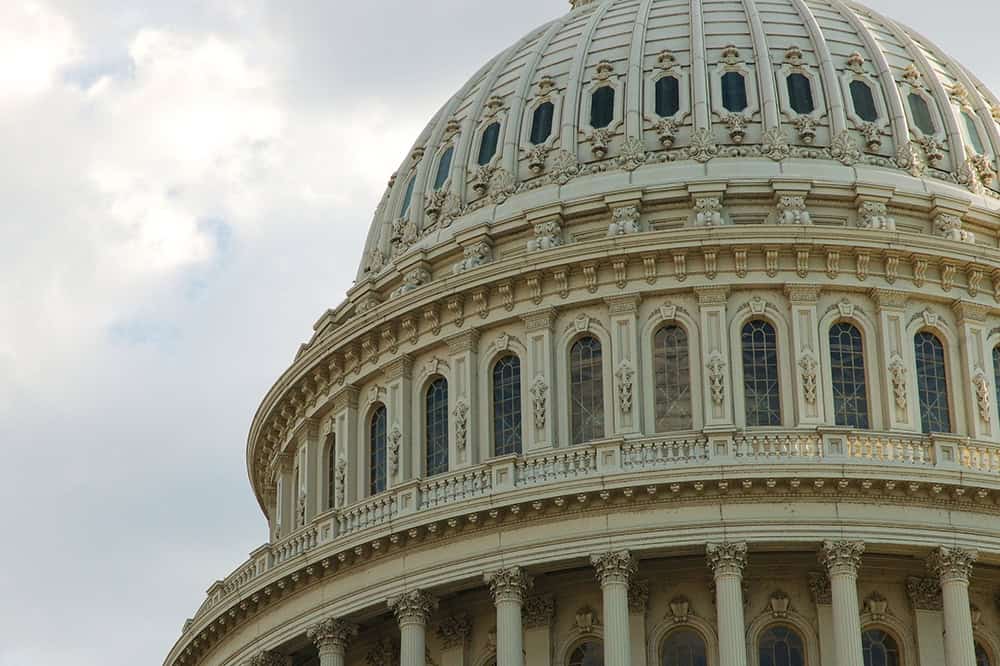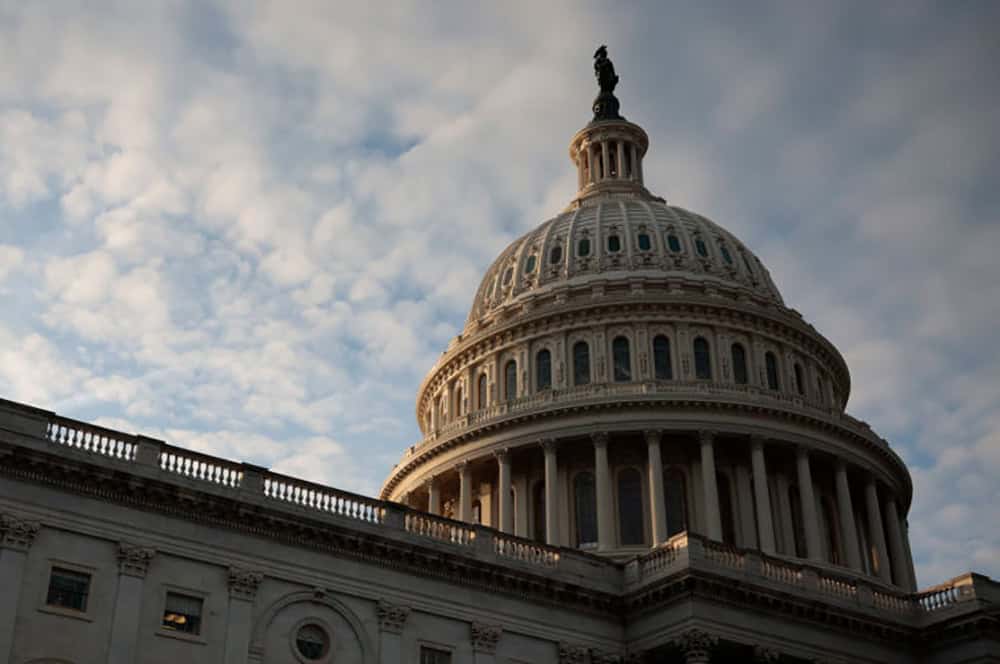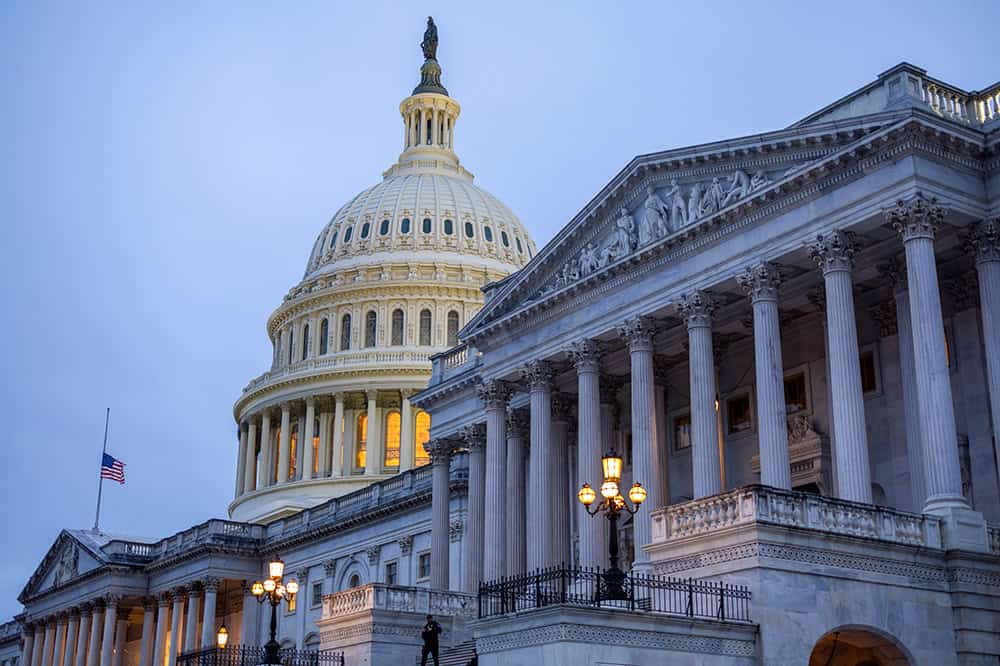The Debt Ceiling Will Be Reinstated on January 1 — Here’s What’s at Stake
Last Updated December 12, 2024
One of the first, and most consequential, decisions facing the lawmakers elected in November is what to do with the debt ceiling. The debt ceiling — otherwise known as the debt limit — is the maximum amount of money that the U.S. Treasury can borrow to pay its obligations; that ceiling is set by law. The federal government previously reached its debt ceiling in early 2023. After months of using accounting maneuvers known as extraordinary measures to stave off default, policymakers enacted the Fiscal Responsibility Act of 2023, which included suspending the debt ceiling through January 1, 2025.
On January 1, the debt ceiling will be reestablished based on the amount of debt existing on that date. At that point, the Treasury will once again start using extraordinary measures to temporarily keep the government from defaulting on its debt. Policymakers will need to enact legislation to raise or suspend the debt ceiling before those measures lapse to avoid a default. In recent history, policymakers have frequently waited until the last minute to take action on the debt ceiling. Allowing the nation to default certainly would have significant economic consequences; even approaching the ceiling could disrupt financial markets and the U.S. economy.
Here’s everything at stake with the upcoming debt ceiling.
Recent History of the Debt Ceiling and Implications for U.S. Credit Ratings
Lawmakers must periodically address the debt ceiling. Between 1992 and 2012, the ceiling was raised 15 times. Beginning in 2013, policymakers began suspending the ceiling (with a reset at the end of the period) rather than raising it directly. Since 2013, policymakers have suspended and reinstated the debt ceiling seven additional times, allowing the debt ceiling to rise from $16.7 trillion in 2013 to $31.4 trillion in 2023. Raising the debt ceiling enables the Treasury to fund commitments that the government has already incurred as the result of laws and budgets approved by the President and the Congress.
The United States has never defaulted on its debt, but lawmakers frequently wait until the last minute to raise or suspend the debt ceiling. That fiscal brinkmanship has negative consequences, such as a potential downgrade of U.S. credit by rating agencies, and is a source of anxiety for financial markets. Increased perceptions of the riskiness of U.S. debt by investors may put upward pressure on interest rates and, as a result, the cost of interest payments for the United States.
In fact, two of the three major credit rating agencies (Standard and Poor’s and Fitch) have downgraded the nation’s credit rating and have cited brinksmanship over the debt ceiling as one of the major factors, along with a concern about the size of the mounting debt. The third major rating agency — Moody’s — lowered their outlook for the U.S. credit rating in November 2023, signaling an increased risk for a credit downgrade for similar reasons.
What Happens When the Debt Ceiling Gets Reinstated on January 1?
On day one of the reinstatement, the debt ceiling will be set at the current level of debt subject to the limit, and extraordinary measures will be necessary to continue the borrowing required to fully fund ongoing government obligations.
Those extraordinary measures will continue until the debt ceiling is raised, a suspension is reinstated, or the available measures are exhausted. Extraordinary measures include suspending reinvestment in a portion of the Thrift Savings Plan (a retirement fund for federal employees), halting the daily reinvestment of the Exchange Stabilization Fund, and halting issuance of State and Local Government Series securities and savings bonds.
The Treasury can also draw down on its existing cash balance as a means of paying its obligations. While the Treasury’s policy is to maintain sufficient funds to cover short-term needs, an impasse around the debt ceiling can force its balance lower as the agency must rely on cash to finance the government’s spending.
The extraordinary measures and cash balance typically can last up to a few months. Most recently, extraordinary measures enabled the government to continue meeting its obligations from January 2023 until lawmakers suspended the debt ceiling in June 2023 as part of the Fiscal Responsibility Act.
If the available options are exhausted prior to legislation being enacted to adjust the debt ceiling, the United States would default on its debt.
How a Debt Ceiling Impasse Could Influence the United States
A debt ceiling impasse have the potential to disrupt the delivery of key resources to vulnerable populations, cause the world to view the United States as a less reliable place to invest, and contribute to negative economic effects.
With spending limited to incoming revenues, the federal government could be forced to delay payments to employees, contracts could be violated, and payments to beneficiaries of government programs (including Social Security and Medicare) could be delayed or reduced. The wellbeing of recipients of key government benefits might be disrupted, even if the funds were paid out later. The Treasury does not have explicit legal authority to prioritize one payment over another payment, meaning that technically the agency could not prioritize payments on principal and interest over other obligations. However, since Congress has never failed to act prior to the exhaustion of all maneuvers, how payment prioritization would unfold is unknown.
Debt ceiling impasses negatively influence the world’s view of the United States as a reliable partner and investors’ perceptions of Treasury securities as safe, stable investments. If U.S. debt is viewed as more risky, investors could divert their resources to other markets, pushing up interest rates, and therefore interest costs for the United States. A Brookings analysis finds that default on U.S. debt and harm to the safety and liquidity of the Treasury market could result in more than $750 billion in increased interest payments over a decade. Interest costs are already on track to exceed the previous high relative to the size of the economy in 2025, in part because of the increases in interest rates over the past couple of years.
Debt ceiling brinkmanship is also tied to negative economic effects, including lower household wealth and reduced business confidence that increase the likelihood of a recession. A study by Macroeconomic Advisers on fiscal brinkmanship during 2013 found that if the debt ceiling had caused even a brief restriction on borrowing at that time, the economy could have been pushed back into recession. More recently, a 2023 report from Moody’s Analytics found that even a short-term breach of the federal debt ceiling could reduce gross domestic product, result in the loss of two million jobs, and wipe out trillions of dollars in U.S. household wealth. A prolonged breach of the debt ceiling would likely amplify those effects. A breach in the debt ceiling would also affect the stock market, decreasing the value of public companies.
Governing by crisis and threatening our nation’s creditworthiness are not effective means of addressing our fiscal situation. Instead of risking default, lawmakers should focus on solutions that close the structural imbalance between spending and revenues to put our nation on a more sustainable path. The good news is that many spending and revenue options exist to stabilize the debt, prevent the debt from rising so quickly, and steer our nation away from repeated fiscal brinkmanship.
Further Reading
What Is a Continuing Resolution?
A continuing resolution is a temporary funding measure that Congress can use to fund the federal government for a limited amount of time.
Continuing Resolutions Are Stopgap Measures — But Now We Average Five a Year
While continuing resolutions can help avoid government shutdowns, they should be rarely used. However, CRs have become the norm.
Why Do Budget Baselines Matter?
Applying the current-policy baseline would not only be fiscally irresponsible in terms of this year’s tax debate, but it would set a dangerous precedent for the future.


